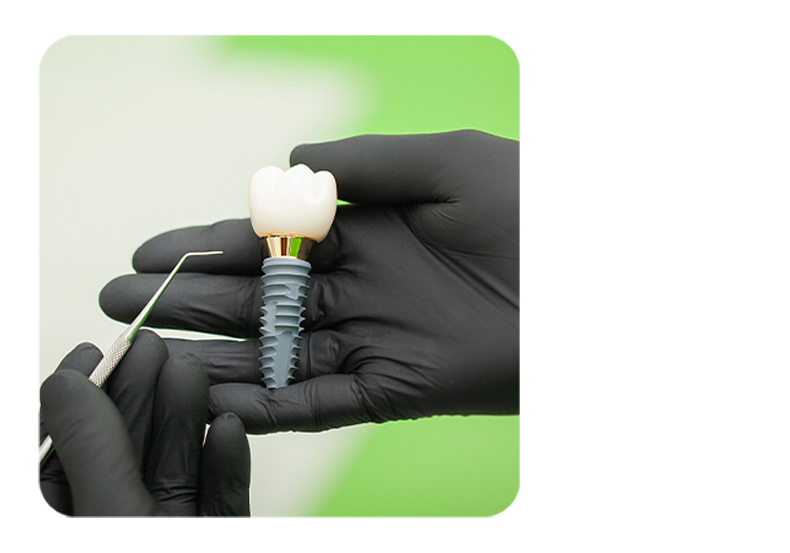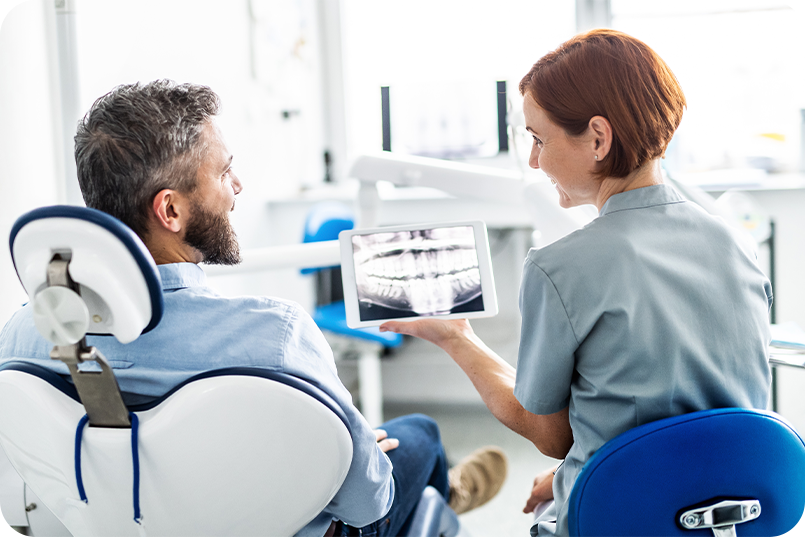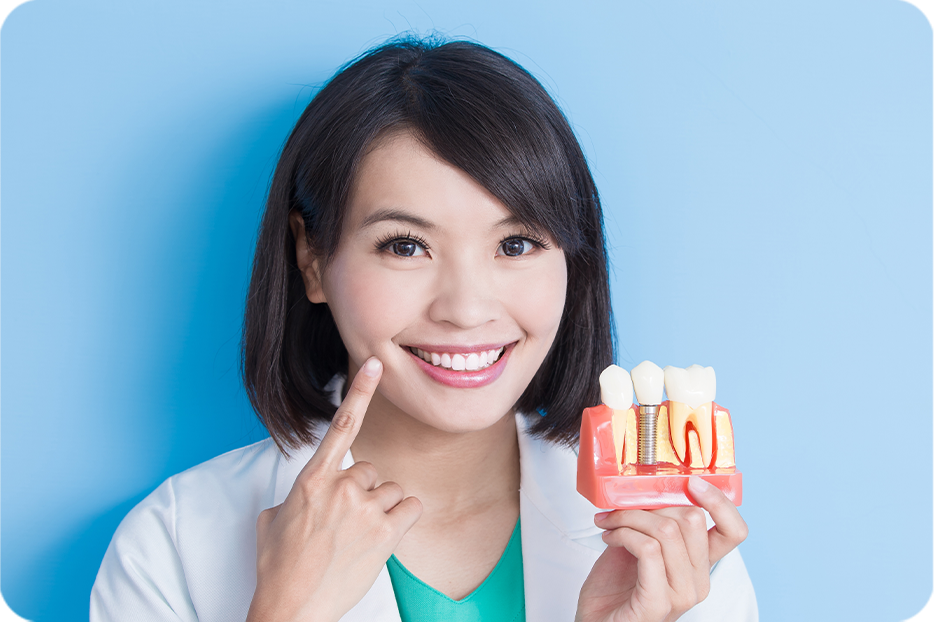Single Tooth Replacement
Single Tooth Implant: A Permanent and Aesthetic Solution for Your Missing Tooth
A single missing tooth can lead to both aesthetic and functional challenges. While traditional treatments like dental bridges have been used for years, modern dental technology has made single tooth implants a leading choice for patients seeking the most natural and durable solution available.
So, what exactly is a single tooth implant, how is it applied, and what are its advantages? At LHC Klinik, we’ve gathered all the essential information about single tooth implant treatments for you.
What Is a Single Tooth Implant?
A single tooth implant is a treatment that involves placing an artificial tooth root in place of a missing tooth. Made from titanium or zirconium, the implant integrates with the jawbone and is topped with a porcelain or zirconium crown, providing a durable, natural-looking tooth replacement.
Unlike traditional dental bridges, single tooth implants do not require altering adjacent teeth. In contrast, dental bridges involve trimming the neighboring teeth to support the bridge, which can compromise the health of those teeth. This makes implants a superior treatment in terms of both aesthetics and dental health.


Who Is a Candidate for a Single Tooth Implant?
Most individuals who meet certain health criteria can undergo a single tooth implant procedure. However, the following conditions must be met for successful implantation:
- ✔ Sufficient jawbone volume and density
- ✔ Generally good oral and dental health
- ✔ Control of any chronic conditions, such as diabetes, that may affect healing
- ✔ Minimal or no smoking, as smoking can negatively impact implant success
Your dentist will assess your suitability for an implant after performing a thorough examination and radiographic assessments.
How Is a Single Tooth Implant Applied?
The process of getting a single tooth implant involves several stages and typically takes a few months to complete. Here’s an overview of the step-by-step procedure:
- Examination and Planning
- A comprehensive examination of the patient’s mouth and jaw structure is conducted. Panoramic X-rays or 3D imaging are used to assess the condition of the jawbone.
- A detailed treatment plan is then created, outlining where and how the implant will be placed.
- Surgical Implant Placement
- The implant is placed under local anesthesia. A small hole is created in the jawbone, and the titanium or zirconium implant is positioned.
- The procedure generally lasts between 30–60 minutes and is minimally invasive, ensuring patient comfort.
- Healing Phase (Osseointegration)
- The implant needs time to fuse with the jawbone.
- This process usually takes 2 to 4 months. The implant becomes securely integrated into the bone, providing a stable root structure.
- Final Crown Placement
- After the healing period, an abutment is placed on the implant, and a custom porcelain or zirconium crown is attached, completing the treatment.


Advantages of Single Tooth Implants
Compared to other tooth replacement methods, single tooth implants offer numerous benefits:
- ✔ Natural Appearance and Comfort: Implants provide the closest aesthetic match to natural teeth, both in appearance and feel.
- ✔ Long-Lasting: With proper care, implants can last a lifetime.
- ✔ No Damage to Adjacent Teeth: Unlike bridges, which require trimming the neighboring teeth, implants preserve the health of surrounding teeth.
- ✔ Improved Chewing and Speaking Function: Implants eliminate the chewing difficulties caused by missing teeth and improve speech clarity.
- ✔ Prevention of Bone Loss: Implants help prevent bone deterioration that often occurs after tooth loss.
Single tooth implants are especially ideal for patients with missing front teeth, offering a highly aesthetic solution.
Post-Treatment Care Tips - Single Tooth Replacement
The success of your implant treatment depends on how well you care for your mouth during the recovery period. Here are some tips to help:
- ✔ Avoid hard and hot foods for the first few days.
- ✔ Take prescribed antibiotics and painkillers as directed.
- ✔ Maintain daily oral hygiene, but gently clean the implant area.
- ✔ Limit smoking and alcohol consumption, as they can interfere with the healing process.
- ✔ Attend regular follow-up visits with your dentist to ensure proper healing.
With regular care and checkups, your implant will last for many years.


Conclusion: A Permanent Solution for a Beautiful Smile
Single tooth implant treatment offers an aesthetic, functional, and long-lasting solution to replace a lost tooth.
- ✅ Providing the most natural appearance, this method is ideal for patients seeking a healthy, beautiful smile and improved chewing function.
- ✅ It helps prevent bone loss, improves chewing and speech function, and ensures long-lasting results.
📍 At LHC Klinik, we offer single tooth implant treatments that restore your missing teeth in a permanent and aesthetic way. If you're looking for a lasting solution for your missing tooth, consult your dentist to find out if single tooth implants are right for you.
For a healthier and more beautiful smile, we invite you to LHC Klinik!
Frequently Asked Questions
Zirconium crowns are durable, metal-free dental restorations made from zirconia, known
for:
• Exceptional strength and resistance to fractures
• Biocompatibility, reducing the risk of allergic reactions
• Natural-looking aesthetics due to their tooth-like translucency
• Longevity with proper oral care
These crowns are widely used for both front and back teeth, offering a combination of
aesthetics and durability.
Common mistakes in tooth brushing can harm oral health. These include:
• Brushing too hard, leading to enamel wear and gum irritation
• Using a toothbrush with hard bristles
• Neglecting to brush for at least two minutes
• Overlooking the gumline and tongue
Correct Technique:
Use a soft-bristled toothbrush at a 45-degree angle to the gums. Apply gentle, circular
motions and avoid scrubbing aggressively. Ensure you brush all surfaces of the teeth,
including the back and chewing surfaces.
Teeth Grinding Habit: Its Relation to Stress and Solutions Teeth grinding, or bruxism, is closely linked to stress, anxiety, and tension. Solutions include: • Using a night guard • Stress-reduction practices (yoga, therapy, exercise) • Mindfulness techniques to become aware of daytime clenching Addressing the root causes of stress can significantly reduce grinding episodes.
Effects of Smoking on Oral and Dental Health Smoking adversely affects oral health by: • Increasing the risk of gum disease • Delaying healing after dental procedures • Causing bad breath and staining teeth • Elevating oral cancer risk Quitting smoking improves oral health and the success of dental treatments.
Bone grafting restores bone in areas where it's lost due to tooth extraction, gum disease, or
trauma.Types of bone grafts include:
• Synthetic materials
• Donor or patient’s own bone (autograft)
Bone grafting supports future dental implant placement or maintains facial structure.
